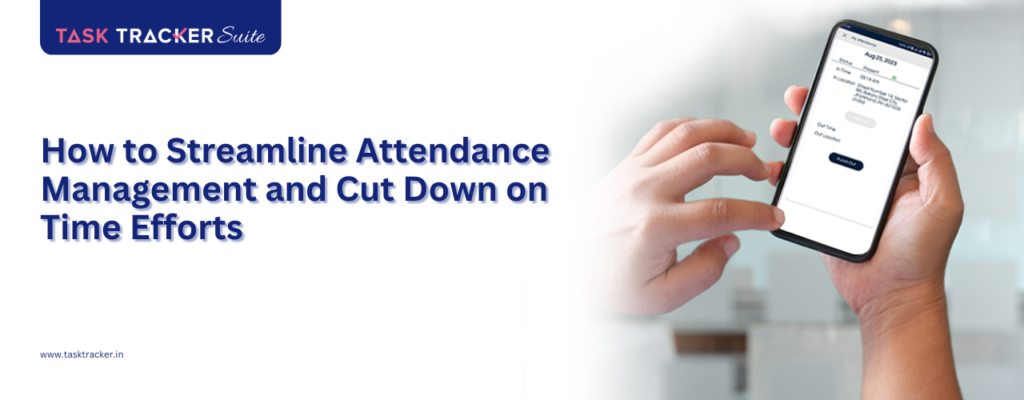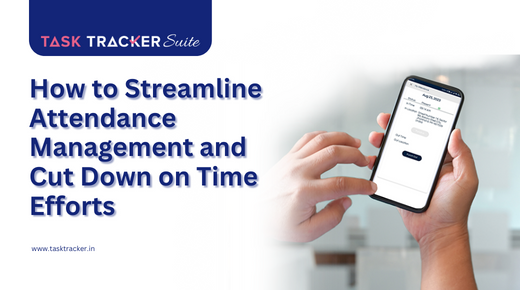
Effective attendance management is a critical aspect of any organization’s operations. However, the traditional methods of tracking attendance, such as manual registers and spreadsheets, can be time-consuming and error-prone. In today’s fast-paced world, businesses are seeking innovative ways to streamline attendance management and reduce time and effort. This blog explores the challenges of traditional attendance tracking, the benefits of adopting modern solutions, and practical steps to implement a time-efficient attendance management system.
Challenges of Traditional Attendance Tracking
Manual Processes:
Using manual registers or spreadsheets for attendance tracking is labor-intensive and prone to errors. It’s easy for data to be misrecorded or lost, leading to inaccuracies and discrepancies in attendance records.
There is a Risk of Human Error
Relying on punched cards or time sheets introduces the risk of human error. Employees might inaccurately record their work hours, leading to incorrect payroll calculations when data is entered into your payroll software.
Time Theft by Employees
Manual timesheets and punched cards are susceptible to time theft, where employees can punch in for their colleagues. This practice, known as buddy punching, is prevalent in larger companies, and manual systems lack the means to prevent it.
Time-Consuming Manual Entry
Manual attendance recording is time-consuming. Queues during entry and exit, as well as dealing with errors and ticket issues, consume valuable time for both employees and HR departments.
Ineffectiveness and Outdated Methods
Manual clock-in systems are ultimately ineffective and outdated. They can adversely affect company performance and lead to costly errors, which become more pronounced as the organization grows.
Keyboard and Printing Errors
Manual data entry, whether for attendance or other records, is prone to keyboard and printing errors. A single mistake can cascade into inaccuracies, particularly concerning student attendance percentages.
Unreviewed Eligibility Requirements
A well-defined student attendance policy is crucial for maintaining good attendance practices. Regularly reviewing and adhering to this policy, which may include warning systems and vacation approval guidelines, ensures consistency.
Incorrect Time Entries
Manually managing time entries across various methods invites discrepancies. Integrating automatic time recording, especially through secure biometric systems, reduces errors and the risk of time theft.
Excessive Paperwork
Manual attendance systems often lead to excessive paperwork, making data management cumbersome. Retrieving records becomes particularly challenging in multi-office setups.
Benefits of Streamlining Attendance Management
Time Savings:
By adopting automated attendance management systems, businesses can significantly reduce the time spent on manual tracking and reporting. This allows HR professionals to focus on more value-added activities.
Accuracy:
Automated systems minimize the risk of errors associated with manual data entry, ensuring accurate and reliable attendance records.
Real-Time Insights:
Modern attendance management solutions provide real-time visibility into attendance data. Supervisors and HR personnel can quickly access information, monitor trends, and make informed decisions.
Employee Empowerment:
Many automated systems offer employee self-service portals where individuals can view and manage their own attendance records. This reduces the administrative burden on HR while empowering employees.
Implementing a Time-Efficient Attendance Management System
Choose the Right Solution:
Research and select an attendance management software that aligns with your organization’s needs. Look for features like real-time tracking, mobile accessibility, and integration capabilities. For an online attendance management system, tasks allocation, knowing the productive hours of your team with online timesheets, it’s always great to use applications like Task Tracker.
Data Migration:
If you’re transitioning from manual methods to automated systems, ensure a smooth migration of existing attendance data. Verify data accuracy before importing it into the new system.
Training:
Train HR personnel and employees on how to use the new system effectively. Clear communication about the benefits and functionalities of the software is crucial for successful adoption.
Customization:
Configure the system to match your organization’s attendance policies and rules. This includes setting up leave types, shift patterns, and overtime calculations.
Communication:
Communicate the implementation of the new attendance management system to your employees. Address any concerns and provide guidelines on using the system for recording attendance.
Continuous Monitoring:
Regularly monitor the system’s performance and gather feedback from users. This helps identify any issues early on and make necessary improvements.
Bottom line
Streamlining attendance management is a strategic move that can yield significant benefits for businesses. By transitioning from traditional manual methods to modern automated systems, organizations can save time, reduce errors, and empower both HR personnel and employees. The implementation process requires careful planning, customization, and effective communication to ensure a smooth transition. In a world where efficiency and accuracy are paramount, adopting a time-efficient attendance management system is a step towards optimizing organizational processes and driving success.


Leave a Reply